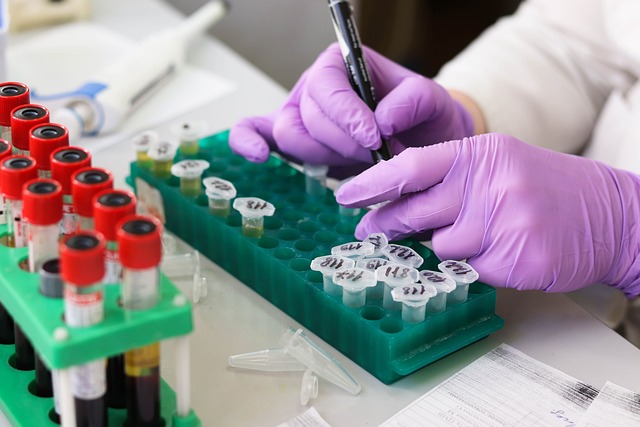4 Steps For A Successful Clinical Study Build
A clinical study is designed to answer specific research questions concerning biomedical or health-related phenomena. These studies form the foundation of evidence-based medical practices, driving the evolution of healthcare.
When clinical studies are built with precision, they have the potential to unearth ground-breaking revelations that can fundamentally transform the medical landscape. However, the journey to a successful clinical study build is intricate, requiring a systematic approach and meticulous execution.
This article offers a comprehensive roadmap, detailing the steps for a successful clinical study build:
Understanding Controlled Terminologies
When constructing a clinical study, it’s critical to understand controlled terminologies, particularly those within the Clinical Data Interchange Standards Consortium’s (CDISC) Study Data Tabulation Model (SDTM). Controlled terminology provides a set of standard terms to achieve consistent naming conventions.
It’s a language that helps harmonize and streamline the communication process, eliminating confusion and promoting clarity in data interpretation. In clinical trials, CDISC SDTM controlled terminology is a global standard that ensures the data can be understood, shared, and compared across different studies, organizations, and countries.
Controlled terminology allows diverse players in the clinical research field to ‘speak’ the same language. Whether dealing with medical procedures, lab tests, adverse events, or medicinal products, you’ll find a corresponding standardized term within the controlled terminology system.
Developing Study Design
After mastering the language of controlled terminologies, the next step is to develop your study design. Developing a study design is a crucial guiding step for your study. It sets the direction and guides subsequent steps. Here are the steps to developing a study design:
Defining Your Question
The first step toward a successful clinical study build is to define your research question or objective. It should be specific, measurable, achievable, relevant, and time-bound.
For instance, suppose you’re studying the effect of a new drug on reducing heart disease risk. Your research question can be, ‘Does drug X significantly reduce the risk of heart disease in adults over 50 within a year?’
Formulating A Hypothesis
This is a tentative prediction or explanation of the relationship between two or more variables. The hypothesis guides your data collection and analysis and sets a foundation for interpreting your study’s findings.
Identifying Your Study Population
This refers to the group of individuals you’ll include in your study. You have to decide whether to focus on a particular age group, gender, medical condition, or demographic characteristic.
Determining The Sample Size
This is the subset of your population that’ll participate in the study. Your sample size should be large enough to provide significant results but small enough to be manageable.
A well-crafted study design determines the type of study suitable for the study population and paves the way for a robust and impactful clinical study.
Securing Ethical Review And Approval
Securing ethical approval is pivotal in any clinical study build. First, you must prepare all necessary documents outlining your research’s moral considerations. These documents often include your study’s protocol, participant information sheets, and informed consent forms. They’re meant to demonstrate respect for participant autonomy, provide confidentiality, and minimize potential harm.
Next, you’re set to submit your prepared documents to an Ethics Committee. This group, also known as an Institutional Review Board in some regions, is tasked with safeguarding the rights and welfare of study participants. They’ll scrutinize your research plan, evaluating if it aligns with established ethical guidelines and principles.
Finally, after their review, the Ethics Committee will provide feedback or concerns. You must address these promptly and satisfactorily. This step is iterative and may require several rounds of communication with the committee until they’re convinced of your study’s ethical integrity. Remember, their approval gives you the green light to start your study.
Conducting The Study
Participant safety and strict adherence to protocol take center stage when doing the actual study. All procedures must be carried out as outlined in the study design, ensuring consistency and reliability. Moreover, participants’ well-being, rights, and comfort should be a primary concern throughout the study, as they’re invaluable contributors to the research.
In parallel, vigilantly monitoring the ongoing study helps promptly detect and address any issues or challenges. This could range from technical glitches in data collection tools to unforeseen participant concerns.
Lastly, you should remain flexible and adaptive in this step. Despite the best-laid plans, real-world research can present unexpected scenarios. You’ll need to navigate these with professionalism, maintaining integrity and ethics in the study while ensuring participant safety. This delicate balance is critical in steering the study toward its successful conclusion.
Conclusion
Navigating a successful clinical study build can be a complex journey involving precise steps and careful planning. Each step is pivotal, from understanding controlled terminologies to conducting the study. Prioritizing participant safety, protocol adherence, and problem-solving resilience contributes to your study’s success.
While these steps provide a roadmap, it is the meticulous application of each that determines the impact and effectiveness of a clinical study. Remember, every successful study contributes a significant chapter to the ongoing narrative of medical advancement.

